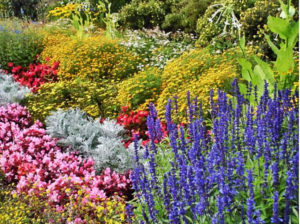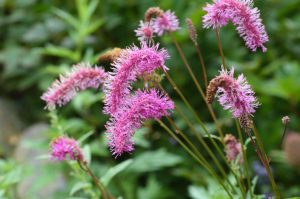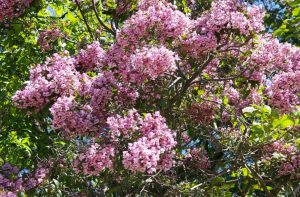
At first, I doubted whether to write this article (although I really wanted to share my knowledge and ideas), whether it would not do more harm than good, whether it would inspire “green poachers” to dig up (and destroy) already rare plants.
However, after consulting with familiar biologists, I came to the conclusion that any knowledge is better than ignorance. After all, many people are already trying to transplant plants from the wild and often, without knowing their characteristics and requirements, kill them in vain. In this case, it is better to equip a person with information: he, at least, will not ruin the excavated plant, or even will not dig it up at all, having got to know him better and imbued with a personal attitude to him. And he certainly will not collect a bouquet of rare flowers, as he did simply because no one has yet informed him that they are rare.
However, I fervently hope that in relation to you, dear readers, my fears are groundless, and we will become like-minded people in not only caring for nature, but also actively protecting it.
A garden in unity with the wild nature
If you have read R. Tolkien’s trilogy “The Lord of the Rings”, you probably remember the sad story of the forest guards of the Ents and their wives — skilled gardeners. The gardens and forests became more and more dissimilar, the Ents and their wives became more and more distant from each other, until the war that swept through their lands separated them forever. The forest guards wandered for a long time in search of friends, led by the prophecy that one day they would meet, that the forest and the garden would be reunited.
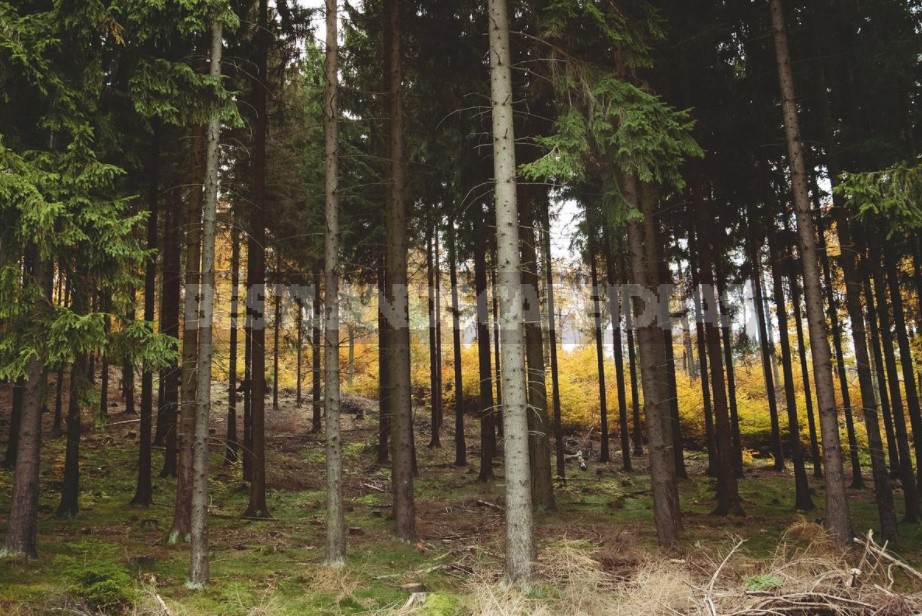
In reality, as well as in a fantastic epic, people play an increasingly important role in the fate of the world — and it is in our power to bring the dream of the Ents closer: to create a garden in which the forest giants and their beloved could be reunited.
Such a garden should not be made up of two different parts: a front flower garden and an untidy, neglected “wild” part. Nor should he be completely feral. On the contrary, a garden with the inclusion of elements of wildlife can become even more beautiful.
In this article, I will talk about wild flowers that can decorate the garden in early spring, at a time when most garden plants are just waking up from their winter sleep. This fact alone makes them very welcome guests in the garden, not to mention the fact that they do not require any maintenance at all and will not put an additional burden on the gardener.
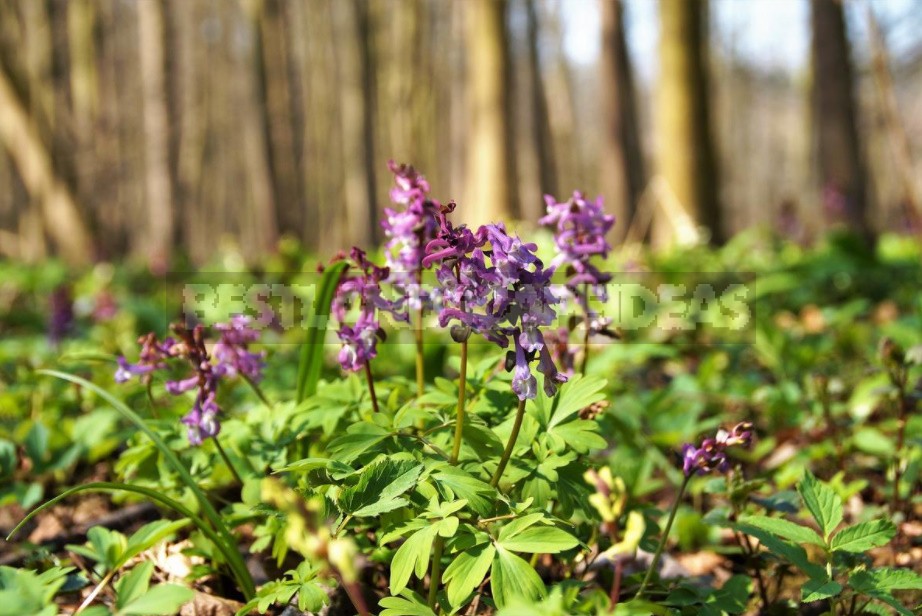
It is possible that wild plants will look most natural in a corner of the garden occupied by some forest tree or shrub, if you have such a corner. In this case, you will recreate a small fragment of another forest in your garden — and the garden, without losing its decorativeness, will also acquire an important environmental function.
But if you do not have forest trees and shrubs, you can create a corner of pristine nature “in a separate” grass tier. I will tell you some possible solutions, but you can come up with even more yourself, taking into account the needs of plants, which I will also tell you about.
Do no harm!
First of all, let’s stipulate the most important principle that must be adhered to: when arranging our garden, we should not harm nature.
Collect seeds
It is best to bring new plants to the garden in the form of seeds: most forest flowers are easily and quickly propagated by seeds and in a few years reach a generative state-they begin to bloom.

If you notice Anemone or Corydalis in the forest, mark it with a ribbon or remember natural landmarks and then, during the fruit ripening period, tie bags or bags on the flower stalks or simply adjust the seed dispersal time and shake them out of the ripe fruits.
Don’t take too much: leave it to nature as well. The bags can be fixed on the peduncles with a thread, but do not tighten tightly: do not squeeze the shoot and do not deprive the fruits of oxygen access. If you use plastic bags, pierce several holes in them (at least one should be at the bottom so that water flows down).
Don’t take the last one
If it is difficult to propagate the plant you are interested in with seeds, find a “colony” of at least 10 (or better — more) individuals, and dig up one (and only one!) plant. If a neighbor asks you to “grab him another one”, convince him to wait until your plant multiplies (if the conditions in your garden suit him, this will happen quite quickly).
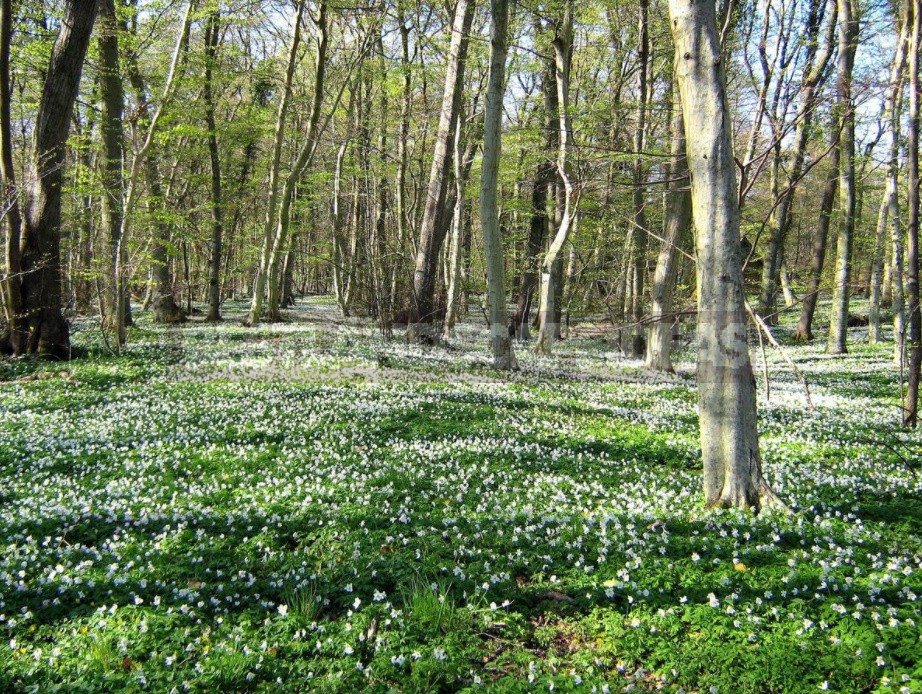
Do not take the largest and “fat” and do not damage the remaining ones. Never dig up a plant if it grows alone or if there are only a few of them! You can destroy the only settlement of this species in your area. Perhaps it was the last, and the species was dying out anyway, but do you need the “glory” of the final destroyer of a rare flower?
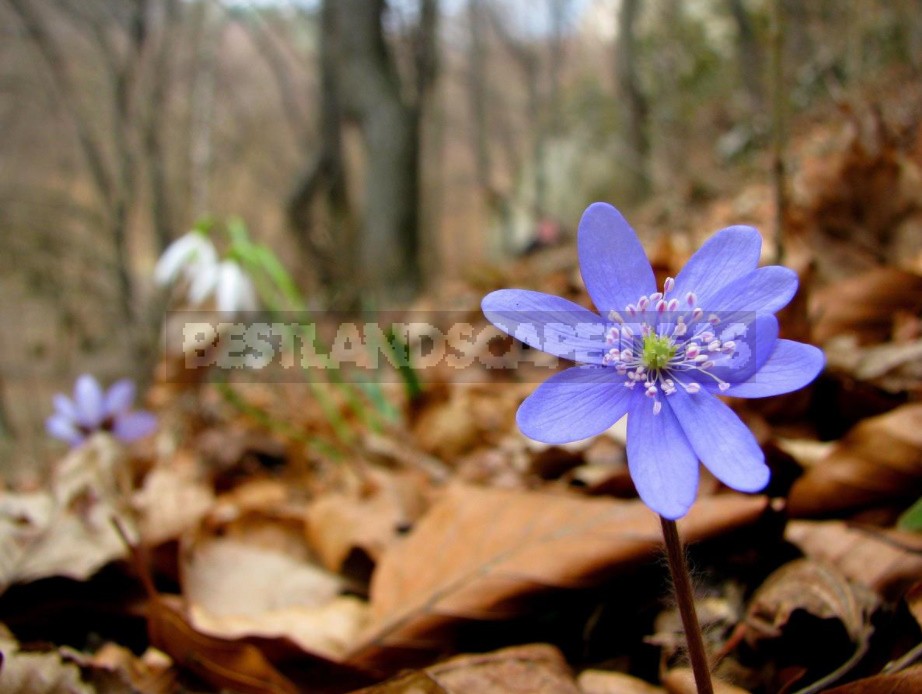
Or maybe this plant was the first one that somehow miraculously got into new places (for example, in a forest that grew after a logging or fire, in a forest belt). And it was you who did not let it take root. So, take plants in the form of seeds, or, if you dig, then only one and only where there are many of them, agreed?
Do not bring “immigrants”
It is not necessary to bring plants from distant lands: even from neighboring regions, “immigrants” should be taken with caution. So you can bring a species alien to the local flora or a non-native form, and besides, the plant may not take root in unnatural conditions, and then everything will be in vain. And it’s easier to track when the seeds ripen in the neighboring fishing line.
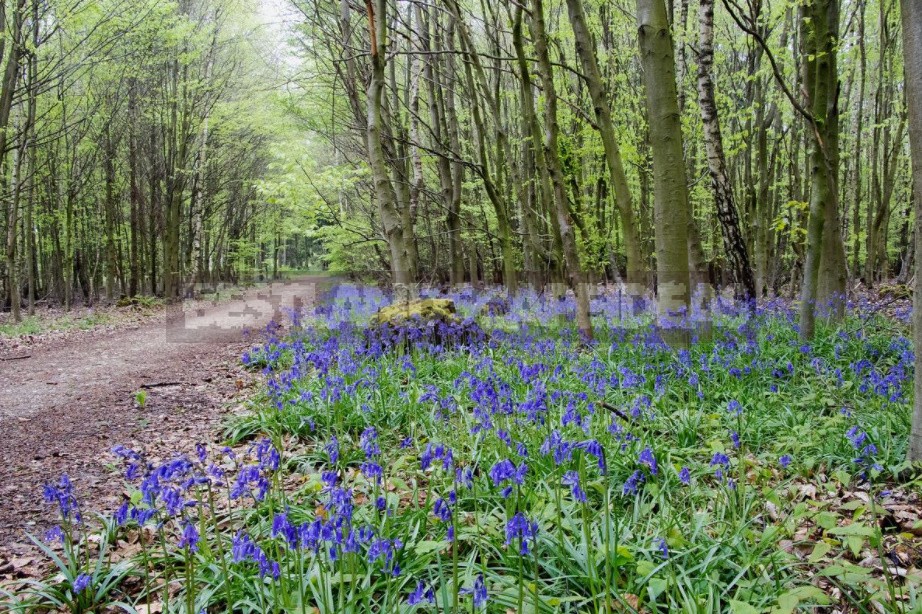
Do not persist in vain
If you still transplanted a plant into the garden, and did not sow it, and it did not take root, do not go to the forest for the next, then another one. Most forest plants are unpretentious and, if they do not take root, it means that the conditions are not suitable for them at all. Accept this, do not ruin nature with your stubbornness.
Return the plants
Since even taking seeds, we still cause some damage to nature, I want to stipulate one more condition: taking a plant from nature and propagating it, then plant several individuals back “to freedom” — return the debt to nature.
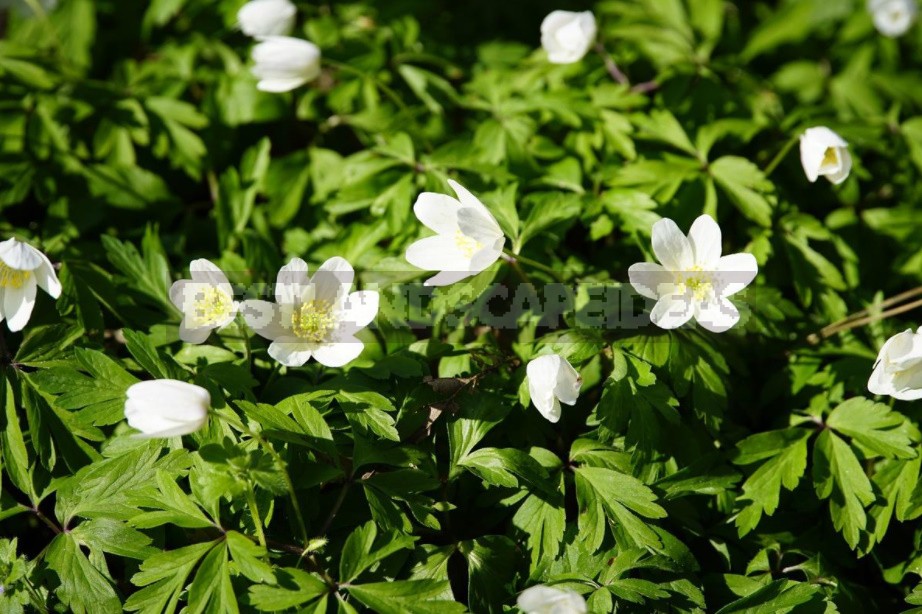
Of course, if there is nowhere to step from Anemone in the vicinity, then there is probably no need to plant them back. But I have never seen an abundance of wild flowers in the immediate vicinity of settlements…
What plants will take root in your garden
Let’s talk about the conditions. Most of the plants described in this article are characteristic of broad-leaved forests (Anemone ranunculoides and Anemone nemorosa, Lathyrus vernus, Hepatica etc.). Such plants (they are called immoral) like loose fertile soil rich in calcium.
If your soils are sandy or, especially, peaty, acidic, they will not be able to grow. In this case, pay attention to the flowers growing in pine forests: Pulsatilla, Calluna, Hieracium pilosella. They probably grow in the vicinity, if you have sand or peat.

Attention: Pulsatilla is a rare plant with very deep rhizomes! Do not even think about transplanting them— you will only ruin them in vain. In this case, only the collection of seeds is possible. Calluna is not so rare, but it also does not tolerate transplants, and do not try.
For shady and damp corners of the garden (for example, if you have a large spruce growing), we can recommend Trientalis europaea, Oxalis acetosella, Convallaria (it is also suitable for broad-leaved forests), Maianthemum bifolium.
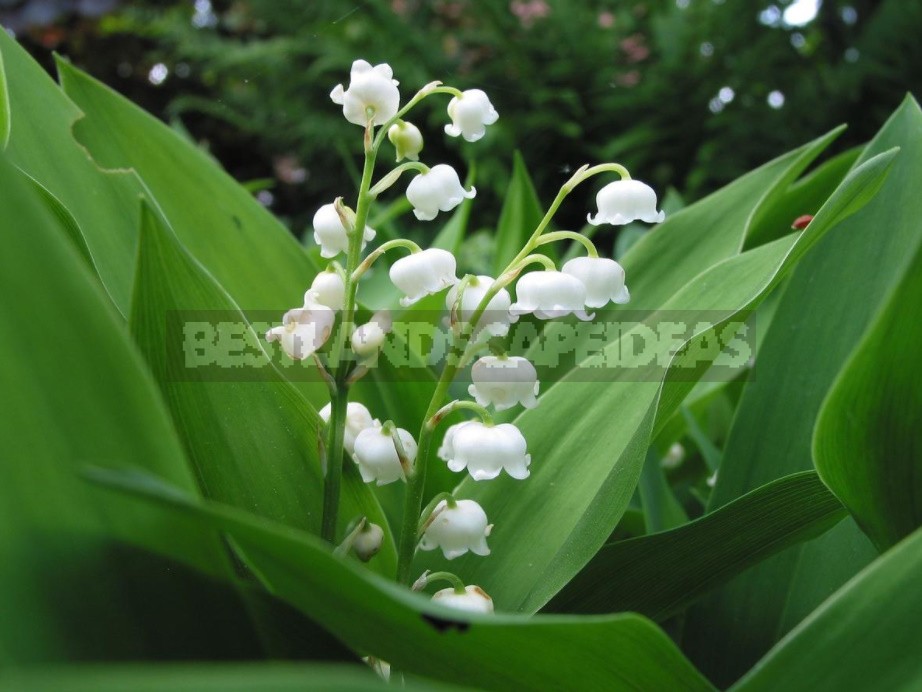
And yet the most beautiful and most diverse spring flowers are associated with broad-leaved forests and carbonate (or at least non-acidic) soils. We will pay the main attention to them.
By the way, in order to get a favorite plant on the site, sometimes it is not necessary to go to the forest. Many attractive wild-growing crops have decorative varieties.
Forest Ephemeroids — who are they?
Let’s start with forest ephemeroids: plants whose active life lasts only a couple of months. Waking up in mid-April, they have time to give shoots, bloom, form seeds and… disappear at the very beginning of summer. But no, they did not die: their rhizomes, tubers or bulbs are dormant underground, waiting for the next spring. And the aboveground parts completely die off — and there are no traces left.

Such a strategy allows ephemeroids to use the short time in the forest when the snow has already come down, and the foliage on the trees and shrubs has not yet unfolded, and sunlight freely penetrates through the sparse crowns. It is this short period of time that is most favorable for photosynthesis: in the summer, in the shade of foliage, you will not be full.
This property of ephemeroids, by the way, is very convenient for the gardener: Anemone ranunculoides and Anemone nemorosa, Corydalis, Gagea, Ficaria can be placed where it becomes very dark in summer (for example, in the trunk circle of an apple tree), or in a place occupied in summer by other late-blooming flowers. It turns out that you place two types of plants in one place without any competition between them.
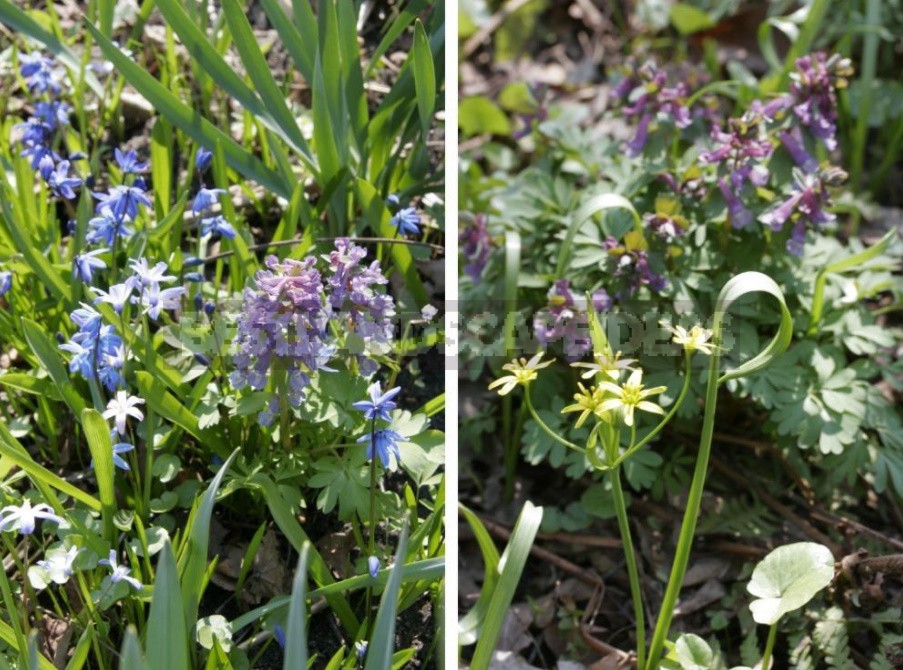
After the death of the aboveground shoots, the soil at the location of the ephemeroids can be loosened shallowly, raked leaves and perform other garden work, if necessary. However, dying shoots may look untidy, so it is better to “hide” them among later blooming and growing plants.
